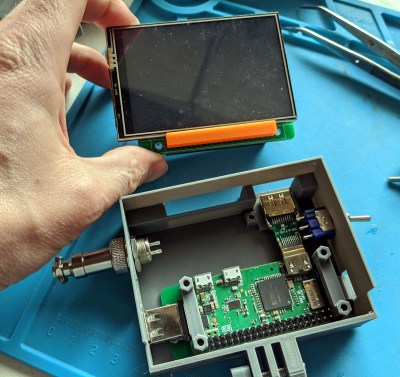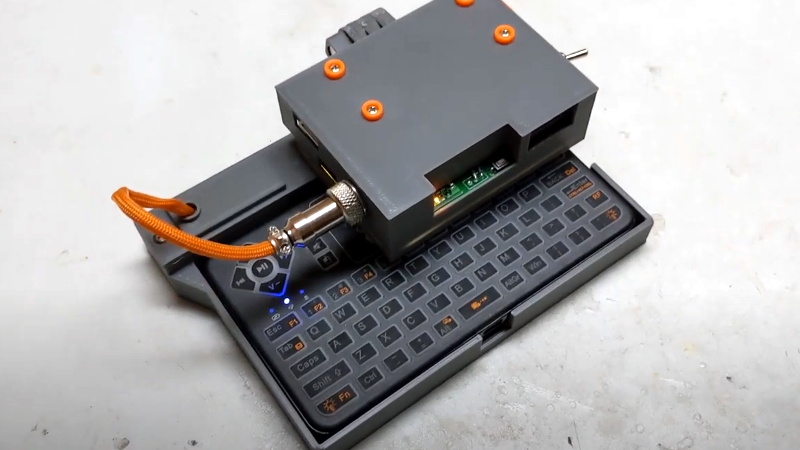The global pandemic has given many people a lot more time at home, which has undoubtedly pushed an untold number of projects over the finish line. Unfortunately, it’s also disrupted global commerce and shipping to the point that getting parts can be a lot harder than we’d like. Which is why [facelesstech] decided to put together this exceptionally mobile cyberdeck out of things he already had laying around.
 Now to be fair, his parts bin is perhaps a bit better stocked for this kind of thing than most. He’s built a couple of Raspberry Pi portables already, so the Pi Zero W, display, and battery management board were already kicking around. He just had to come up with a new 3D printed enclosure that holds it all together with a little bit of cyberpunk flair.
Now to be fair, his parts bin is perhaps a bit better stocked for this kind of thing than most. He’s built a couple of Raspberry Pi portables already, so the Pi Zero W, display, and battery management board were already kicking around. He just had to come up with a new 3D printed enclosure that holds it all together with a little bit of cyberpunk flair.
To that end, he’s done an excellent job of documenting the build and has released the STL files for the 3D printed components. All things considered, we’d say this is probably the most approachable cyberdeck design currently available; if you’ve been wondering what all the fuss is about with these bespoke little computers, this is an ideal project to get started with.
Keep in mind that the idea of a cyberdeck is to build something custom for yourself, so there’s no need to copy this build exactly. If you’re short on parts, you could forgo the battery powered aspect and just keep it tethered. The superfluous (but very cool) GX12 connectors could certainly be deleted as well, although at serious stylistic cost. You’ll probably need to order the specific keyboard that [facelesstech] designed the lower half of the device around, but it’s common enough that it shouldn’t be hard to track down. No matter which way you take it, this design is a great base to start from.
If you’re looking for something a bit more substantial and have the filament to burn, you might take a look at the VirtuScope to fulfill your offset screen needs.
















One tip to avoid losing style points if you dont have a suitable connector laying around and you dont actually need it to disconnect: just print a GX12 “shell” to slip over the cables. I used something similar for this years astronaut halloween costume and it looked much better than cables just disappearing into a hole.
It’s awesome to think that we can just Print what we don’t have. I love my 3D printers.
I’ve got a core 2 duo iMac I stripped down the other day and was just in the shed looking at the bits sitting on the bench contemplating how to turn it into a functional computer again – how would I design the case to hold it together –
Maybe something like this but BIGGER
long story how it got separated from its original housing
IF its low power enough you can even print the shells with plastic springs to be covered in copper tape. Giving you a safe and detectable connector – it just has a disconnect cycle count that is probably well shy of 100. I have done that a few times to create primitive game cartridge slot style pcb edge connectors which is way harder than just two pins for power covered in decorative cowel
Oh wow I didn’t even think of doing that, Have you got a stl for one?
Why forgo the battery part? If you go around, battery powered enclosures and good electronic management are more than rare.